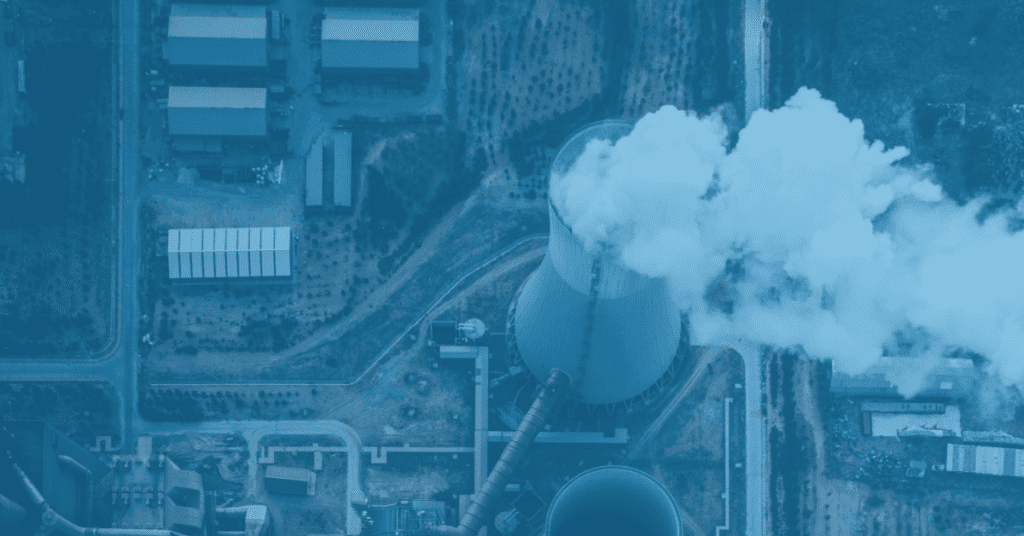Top manufacturing motivations to set a net-zero strategy
Supply chains- the labyrinth of contributing pathways that bring a product to life, manufacturing often sits midway along these, intersecting one path with another. Whether producing the product or making the machinery that enables its production, through to packaging the finished item, manufacturing plays a significant interdependent role in many value chains.
And sustainability isn’t a new word on the agenda; manufacturers have been developing strategies for waste, circularity and resource efficiency for years. However, there is an ever-increasing mention of carbon management and net-zero.
It’s not surprising when the industrial sector is accountable for a significant portion of global greenhouse gas emissions (GHG’s) and energy use. In the US, it’s reported that manufacturing is responsible for nearly 1/4 of the country’s direct carbon emissions. Across the pond, the situation is similar with European manufacturing companies responsible for 880 million tonnes CO²e.
These emissions aren’t viable for reasons of people, planet or profit.
Why does acting on your manufacturing carbon footprint matter now more than ever before?
Honestly, because more people are looking, acting and weighing up their options.
The recent ‘Sixth Assessment’ Intergovernmental Panel on Climate Change (IPCC) report was by far the most damning yet, unequivocally finding that human influence is responsible for climate change, a fact stated over 400 times. The warming began and grew in line with the industrial revolution, which was led in part by the manufacturing sector.
As the devastating effects of climate change become more prevalent in our everyday life, and its risks to the success of our companies become clearer, greater demands are being put on some of the leading emission producers to take action. It’s not just about reducing emissions, it’s about achieving net-zero, and all in a relatively short timescale. Curbing emissions in manufacturing will also enable other companies to do the same, the network effect can proliferate upstream and down, having a significant cumulative effect.
Below we look in more depth at the growing motivations and pressure points, specifically within the manufacturing industry, to take ambitious climate action.
The rules of the game- regulation and incentives
Globally, the regulatory landscape has arguably been slow to drive action. Climate regulations have not kept up with ambitions. However, accelerated by big climate meetings like COP26 and the ramifications of Covid-19, governments and companies alike are reassessing destabilising factors in a bid to prepare for them.
According to the World Economic Forum, countries representing 70% of the global economy have committed to net-zero emissions targets by 2050. It, therefore, follows that governments are looking to tackle the most significant emitters in order to achieve these targets.
The UK’s Industrial Decarbonisation Strategy has indicated that for Britain to hit its net-zero targets industrial emissions need to reduce by two-thirds by 2035 and 90% by 2050. This is representative of manufacturing emissions across the globe.
Governments are looking at three ways to ensure action is taken:
Incentives-
Manufacturing is valuable to governments, often as one of the leading sources of jobs and GDP, which is why arguably until now, leaders have trodden lightly around the matter of climate. But it’s also why governments are incentivising carbon abatement projects within the sector, such as the US offering $42.3 million to tackle emission reductions. And this is just a tiny portion of the financial support on offer.
However, this won’t last forever. The incentives are to spark action, not sustain it. The UK government, for example, have already stated that financial incentives will lessen by 2030 and again by 2040. Taking steps now is well-advised.
Regulation-
Legislation surrounding corporate emission management is growing, predominantly through carbon accounting reporting methodologies. From the existing SECR and SASB to the relatively new, but widely endorsed TCFD, an increasing number of manufacturers will have to report on their sustainability governance and strategies for managing climate-related risks and opportunities alongside the financial impact of such risks on their business.
Getting ahead of the data requirements to fulfil these reports now will save reputational and potential financial ramifications in the future.
Customer pressure-
Public contracts are an essential revenue stream, particularly for the building materials and chemical manufacturing sectors. Working in such proximity with governments and their net-zero agendas will increase scrutiny over manufacturers emission management, it is likely to become a key consideration within the tender process.
Peer pressure- keeping up with the Jones’s
However, the manufacturing industry hasn’t been resting on its sustainability laurels, responsible for over 1/3rd of the Science Based Targets committed and set globally. 10% alone have been set by building, construction and engineering manufacturers. The SBTi is perceived to be the leading path to emission reductions, as the targets are vigorously verified and assessed scientifically. They are also a public declaration of climate action.
As such, it’s no surprise that the sustainability reporting wheels are definitely in motion too, to back up the targets. The manufacturing sector scored highly (Above 80%) on the recommendations section of the TCFD report according to the 2019 EY Global Climate Risk Disclosure Barometer.
However, the study also found that manufacturing companies across the board scored poorly (below 50%) for the comprehensive reporting of climate risks, indicating that there is still room to take the first-mover advantage for companies capable of translating their climate strategy into coherent disclosures.
There is a growing understanding that carbon comes with a cost, reputational and financial; however, tackling emissions, particularly committing to net zero, comes with unique opportunities.
Standing out from the crowd- the competitive advantage of a net-zero roadmap in manufacturing
Due to the interconnected nature of supply chains, every action has a reaction. With two-thirds of global companies (and three-quarters of the world’s 250 largest companies) having set targets to reduce their carbon emissions, a clear president is being set by customers.
Net-zero aligned customers are looking for suppliers to help them reach their scope 3 emission targets. Deloitte reported on a recent Eon survey that 51% of respondents believe a product or services environmental credentials are just as critical as the price.
In fact, large downstream companies are requiring suppliers to report carbon accounting data across all three scopes, alongside climate risks, to bodies like the Carbon Disclosure Project, CDP. As a Gold Accredited Provider for the CDP, we know firsthand the value measuring and reporting carbon data in line with these frameworks provides both for companies within your network and investors. However, it also opens your manufacturing company to 200+ businesses with over $5.5 trillion in buying power.
Furthermore, in a bid to reduce GHG emissions as part of a net-zero roadmap, companies learn a lot from data about their carbon hotspots, risks and opportunities. Tackling these have financial and market share potential, providing emission lighter solutions so early within their lifecycle can yield higher margins, as Andreas Müller, Group CEO of Georg Fischer, shared with Deloitte.
This data also comes in handy when you go to fundraise too.
Transparency and trust the investment motivation
We’ve already discussed the drive to set a clear climate action plan, but there’s one other interested party looking at your carbon data and net-zero roadmap, investors. It’s something our CEO, Mauro Cozzi, has discussed a lot, including within ‘The Accountant’.
“Investors expect access to carbon data to see into the future of their investments, to see exactly how companies will play their part as economies are re-orientated towards net-zero greenhouse gas emissions by 2050.”
The reason is simple, climate change brings risks, which can cost money. The recent IPCC report highlighted that the planet has already warmed by 1.1°C, that’s 0.4°C off the Paris Agreement aligned maximum rise by 2050. Every degree more has a significant effect on the climate, including increased cadence of extreme weather events, which can significantly disrupt the intricate supply chains many companies rely on.
The industrial sector is particularly susceptible to the volatility that climate change brings due to the nature of disparate manufacturing hubs and the often vast ground that is covered between them.
As Alt Energy Magazine reported, in 2017, a single day with temperatures higher than 90°F cost a manufacturing plant more than $10,000 in output. By 2050, those heat-related manufacturing losses could equal more than $47 billion.
Because of this, investors want to understand the numbers behind climate strategies across all industries, but explicitly manufacturing, alongside the risks and plans to mitigate them. Establishing a net-zero strategy pre-empts some of this scrutiny and also enables your company to track and act to mitigate climate problems before they arise.
Are you feeling motivated?
A recent Boston Consultancy Group survey found that you aren’t alone if you are. More than 75% of industrial companies say that net-zero is either the most crucial initiative at their company or one of the top three initiatives. The main motivations cited were meeting regulatory requirements, reducing conversion costs and customer demand.
Whatever the reason establishing a net-zero roadmap, let alone achieving it demands accurate information to enable sustainable decision-making.
Carbon data provides a transparent ledger in the same way that a financial one does, leaving little room for customer, employee, investor or public distrust.
It’s well documented that the benefits of carbon accounting provide the data and breadth of perspective over activities within your value chain to innovate for a net-zero tomorrow, while growing into new markets and reducing internal costs today. Read more about why that’s the case here or ask our carbon accounting experts a question about your company’s net-zero transition.

